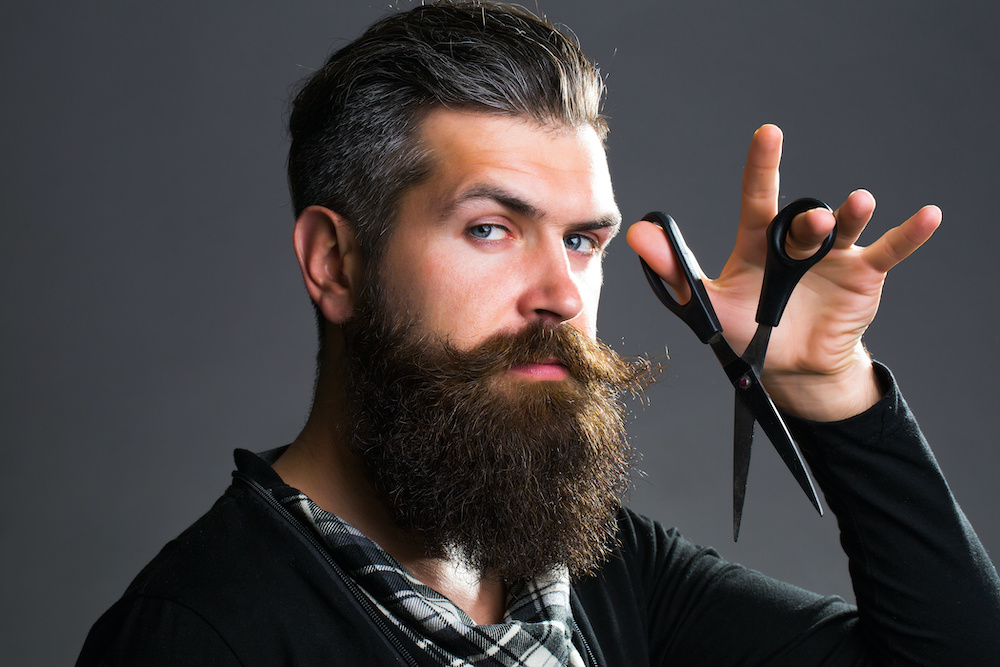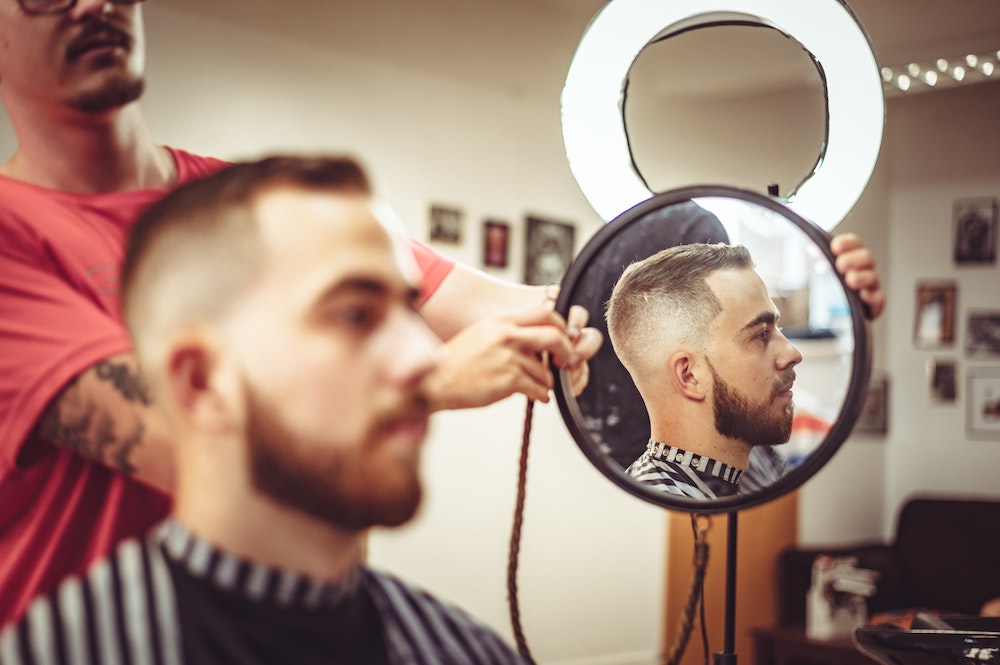Barbershop Terminology: How to Talk Like a Professional Barber
Diana Muresan

If you’ve been to a barbershop before, you might have been wondering what barbers were talking about. Did you know that there is actually a whole particular language in the barbershop industry?
Barbers use their own lingo to describe different services and products that they sell in the shop. For example, when someone asks for a “regular cut,” this means that they want nothing fancy with their haircut (no fades or anything). You’ll also hear barber jargon like “tapers” or “fades.” These terms are used by most barbers around the world, and you’d better know what they mean.
In this blog post, you’re going to find a whole barbershop dictionary with the most popular barber terms and phrases explained. Doesn’t matter if you’re a beginner barber or you simply want to know how to ask for a new haircut, in this blog post you’ll find everything explained. You’ll learn how barbers call certain services and get an understanding of the lingo they use. Ready?
Why should you know the barbershop terminology?

Jargon can be intimidating for people who do not understand it, doesn’t matter what field we’re talking about. Not knowing the basic terms in the barbering industry might keep you limited.
For example, you will not ask for a certain haircut because you don’t know what it is called, or your barber will give you a different haircut than the one you’ve asked for, just because you didn’t know that a specific word can have more meanings in the barbers’ dictionary.
In order to be able to communicate your desires and get one of the latest beard trends, you’d better have a look at these terms and what they mean.
Another reason why knowing the barbershop lingo is important is linked to your barbershop marketing strategy. For example, on your social media pages, you can educate your clients and attract new ones by sharing posts in which you explain some terms and how you do certain haircuts.
Barbershop Terminology Explained: Definitions
- Pompadour Haircut
A haircut where the fringe is swept back from the forehead. It can be both straight back or in a side parting. This haircut reminds us all of Elvis Presley and gives volume to the hair.
- Quiff Haircut
This slightly cleaner brother of Pompadour is a little bit messier and with more texture. It requires some blow-drying, but it’s worth the effort. If you’ve got thin, light hair it will be easy for you to get the quiff with fewer styling products. On the other hand, thick hair is harder to get styled but will get a fuller look.
- Disconnected Hairstyle
A disconnected hairstyle means that the hair is left long on the top and short on the sides. You can choose to slick back the top hair or to pull it up for more height. The difference between the disconnected hairstyle and other layered haircuts is that there is no blending together of the various layers.
- Crop
This is a short, textured, choppy look, often worn with a fringe, and is also known as a French crop. It usually looks best on skinny men with sharp facial features.
- Flat Top
A traditional haircut where the hair is pulled up and the back and sides are very short.
- Zero Taper
A taper that tapers out to zero at the bottom.
- Taper/Fade
These two words express the same thing. When your barber asks if you want a taper, he’s asking if you want your hair to go from long to short gradually. The fade effect finishes above the natural hairline. That will give the impression that your hair has blended into your skin. The hair on top is often shorter than two inches.
- Skin Fade
This look is often achieved with a razor. It is similar to the fade, excepting that the shortest length has to be all the way down to the skin.
- Thinning
Hair thinning is usually used on men who have very dense and heavy hair and want to remove the bulkiness. Basically, thinning creates fine layers in the hair. This technique gives to your hair volume without removing extra length.
- Layering
Refers to cutting the hair at different lengths to create the illusion of length while providing volume. Most medium to long hairstyles require some layering.
- Choppy
When you ask for a choppy cut, you are asking for short layers that have been point cut to create movement.
- Point Cut
It is used to guide the hair into the right shape and style. It removes bulk from the hair’s ends, allowing layers to blend together more seamlessly.
- Layered
Layers help to give your hair texture, especially if you’ve got long hair. They can also create volume and remove weight.
- Razoring
Razoring is a texturing method in which the barber uses a straight razor instead of scissors or clippers. This method is recommended only for thin, straight hair. Razoring can be used to an extreme to create huge separations too, such as a hard parting.
- Hard Parting
A razored section that sits in the parting line of the haircut.
- Blunt Cut
A blunt cut is done by cutting the hair at the same length.
- Toner
This is what gives you that silver tone in your blonde hair, removing the yellow tones.
- Channel Cutting
This is a cutting technique where the barber glides the scissor along the scalp and cuts through the hair without totally closing the scissor blades. This method of cutting the hair is done to achieve directional texture.
- Slicing
This is often done through the top of men’s hair and requires a barber to comb the hair up and hold it in their fingers, low to the scalp. Then, with the scissors partially open, they run them through and up the hair, creating texture and separation. Slicing is best suited to thicker hair.
- Graduation
Graduation is when the hair increases in length in a uniform manner.
- Taper
A traditional taper cut brings the hair in a symmetrical style that leaves the natural hairline visible. In order to reach it, you may ask to start with a grade three at the top and finish on grade one at the bottom.
- Clipper Cut
In barbershop terminology, a clipper cut means using the same clipper size all over your head.
- To Thin Out
Thinning out means reducing the bulk using different haircut techniques using scissors.
- Asymmetrical Cut
Both sides of hair have different lengths though usually connected.
- Tapered Nack
This is generally up to the barber, but how you’d like your haircut to end is an important factor to consider. The tapered neck means that the hairline fades into the neckline, allowing the hair to keep its shape in a natural finish.
- Angles
When you first visit a new barber, they’ll most likely have a look at your head’s angles before beginning to cut your hair. As not every style works for every head shape, your barber will tell you if the cut you’ve asked for doesn’t fit you.
- Beard Oil
All hair types need nourishment, and your beard is not an exception. A few drops of beard oil will bring your beard softer and shinier.
- Crew Cut
In the barbershop lingo, the crew cut is a typical military cut. It can be pulled off at different lengths, but extra short sides are key to this style.
- Point-Cutting
The pointed cut is a technique where the barber uses the point of the scissor to snip away hair at varying lengths, creating a more textured haircut.
- Guard
A guard is actually the clipper’s number. The higher the number, the longer the length.
What do professional barbers do?

Besides using the barbershop terminology, professionals use an appointment scheduling app to make their daily business life easier.
“Goldie has been a lifesaver for me. It has made my scheduling easier and simple. It has become the rock to lean on. I have the control I need and the freedom I want to schedule my clients. Thanks for creating such a great barber app!” – Orlando Velez, Barber at Daasssit Barbershop
Orlando uses Goldie in his barbershop business to send text message reminders to clients, let them book online via his personalized online booking link, and keep track of his monthly financial reports. You can give it a try by downloading it for free from the App Store or Google Play.